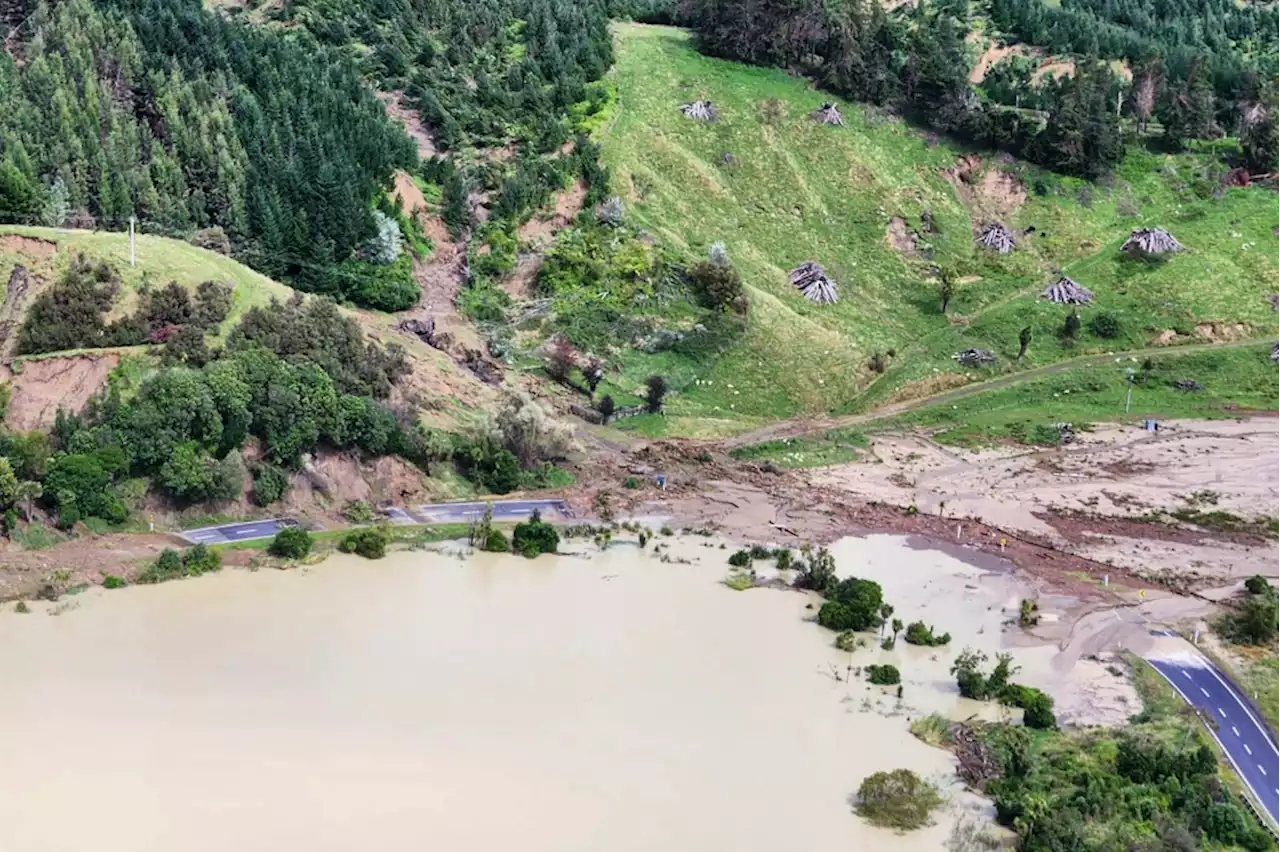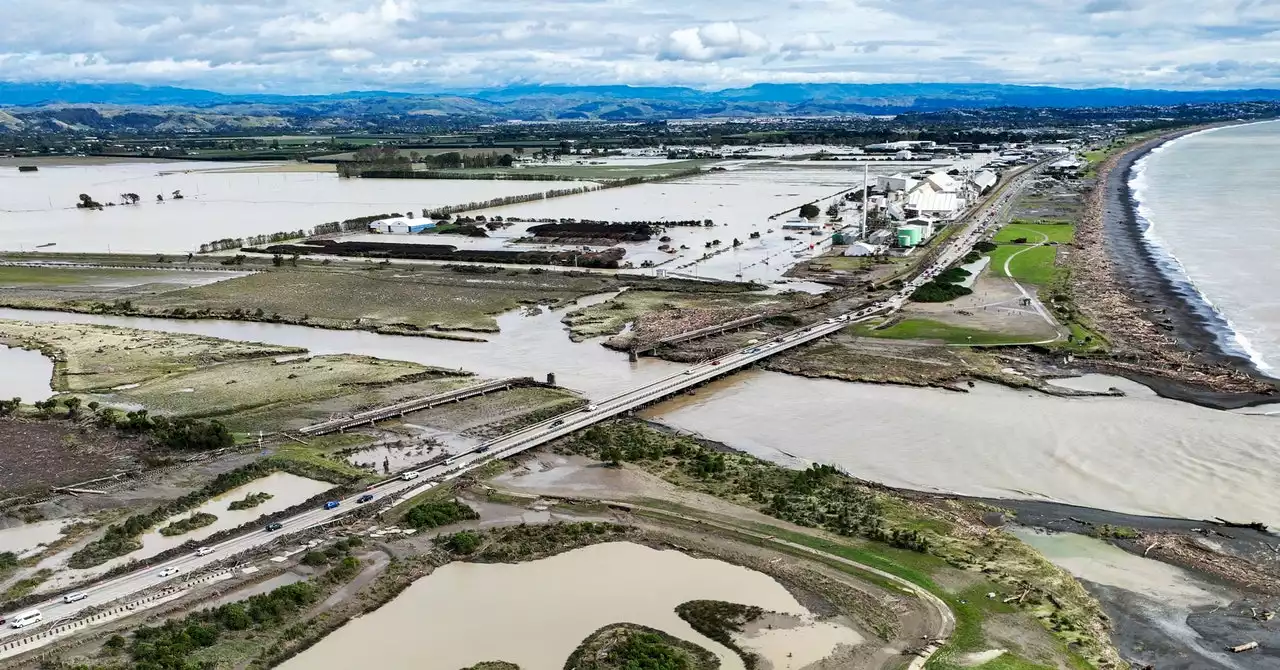Researchers believe our warming planet may have increased the ferocity of New Zealand's recent cyclone because of warmer ocean waters—and that's only the beginning of the country's climate woes.
grappling with two consecutive extreme weather events—massive flooding followed by a cyclone—that have claimed at least 12 lives and left hundreds of thousands of people. The high winds and waters of Cyclone Gabrielle have washed away coastal roads on the north island and left bridges splintered and broken. Landslides have covered tarmac with slick mud, and houses and streets across have been left under feet of water, only weeks after heavy rain also caused widespread floods.
But our warming planet may have increased the ferocity of this cyclone because of warmer ocean waters, says Olaf Morgenstern, an atmospheric scientist at New Zealand’s National Institute of Water and Atmospheric Research. Hotter oceans mean that if a cyclone hits, “it will be stronger, it’ll contain more moisture, more energy and sustain its energy for longer,” he says.linked to La Niña, a cyclical Pacific weather system, which has dominated the region for the past three years.
Record-breaking rainfall and flooding preceded the tropical cyclone and wreaked havoc on the north island in late January—this too seems likely to be connected to climate change. January broke afor Auckland’s wettest month, with 539 millimeters of rain recorded, half of that falling in a single day. That was truly unprecedented, Renwick says, but the likely impact of climate change on New Zealand will be more complex than simply more rain.
The biggest influence on the regional climate are the winds that blow over the country from west to east. These deposit huge volumes of rain on the west coast of the south island in particular., the famous fjord there that’s popular with tourists, is one of the wettest places on Earth, receiving a mean annual rainfall of 6.8 meters. The island’s mountains then force moisture out of the air as it passes over them, casting a rain shadow that leaves the east coast relatively dry.
But introduce even subtle changes in the wind direction or the wind speed, and you can end up with big changes in local climate, Renwick says. Climate modeling suggests those westerly winds are likely to get stronger. “Whether or not they lie over New Zealand so much is a tricky one to answer, because there’s a few moving parts of that story, but the broad picture is slightly stronger winds through time,” he says.
Australia Latest News, Australia Headlines
Similar News:You can also read news stories similar to this one that we have collected from other news sources.
 Italian Artist Gaetano Pesce’s First Solo Show in LA Opens Today. Here’s a Look Inside.Follow the journey of Italian artist and design pioneer Gaetano Pesce. His first ever solo exhibit 'Dear Future' is showing at Future Perfect Gallery in Los Angeles until March 31st.
Italian Artist Gaetano Pesce’s First Solo Show in LA Opens Today. Here’s a Look Inside.Follow the journey of Italian artist and design pioneer Gaetano Pesce. His first ever solo exhibit 'Dear Future' is showing at Future Perfect Gallery in Los Angeles until March 31st.
Read more »
 Missing Utah missionary in New Zealand believed to be aliveBREAKING Teen Utah missionary not heard from since devastating cyclone struck New Zealand is believed to be alive
Missing Utah missionary in New Zealand believed to be aliveBREAKING Teen Utah missionary not heard from since devastating cyclone struck New Zealand is believed to be alive
Read more »
 Cyclone in New Zealand leaves 7 dead, trail of chaosRecovery efforts continue in hard-hit areas of New Zealand on Friday after Cylcone Gabrielle caused chaos leaving at least seven people dead, displacing 10,000 people in the country's most damaging storm in decades.
Cyclone in New Zealand leaves 7 dead, trail of chaosRecovery efforts continue in hard-hit areas of New Zealand on Friday after Cylcone Gabrielle caused chaos leaving at least seven people dead, displacing 10,000 people in the country's most damaging storm in decades.
Read more »
 New Zealand Finmin Robertson: There is evidence that inflation has peakedNew Zealand Financial Minister Robertson said events will exacerbate a slowdown in the economy and that is evidence that inflation has peaked. More to
New Zealand Finmin Robertson: There is evidence that inflation has peakedNew Zealand Financial Minister Robertson said events will exacerbate a slowdown in the economy and that is evidence that inflation has peaked. More to
Read more »
 New Zealand cleans up after glancing blow by cycloneSam Dean, principal scientist at the National Institute of Water and Atmospheric Research or NIWA, said climate change is not necessarily going to increase the frequency of tropical cyclones, but i…
New Zealand cleans up after glancing blow by cycloneSam Dean, principal scientist at the National Institute of Water and Atmospheric Research or NIWA, said climate change is not necessarily going to increase the frequency of tropical cyclones, but i…
Read more »
